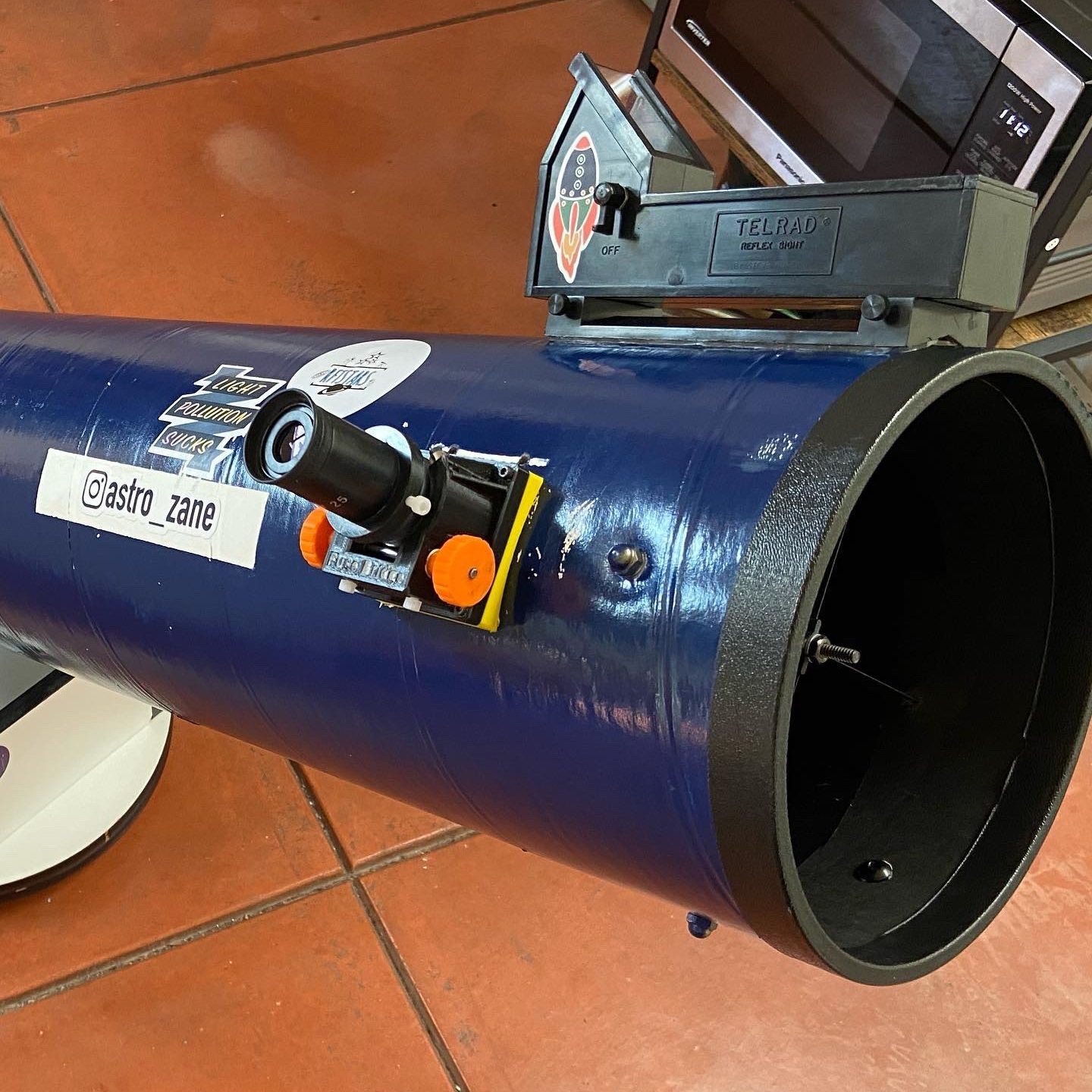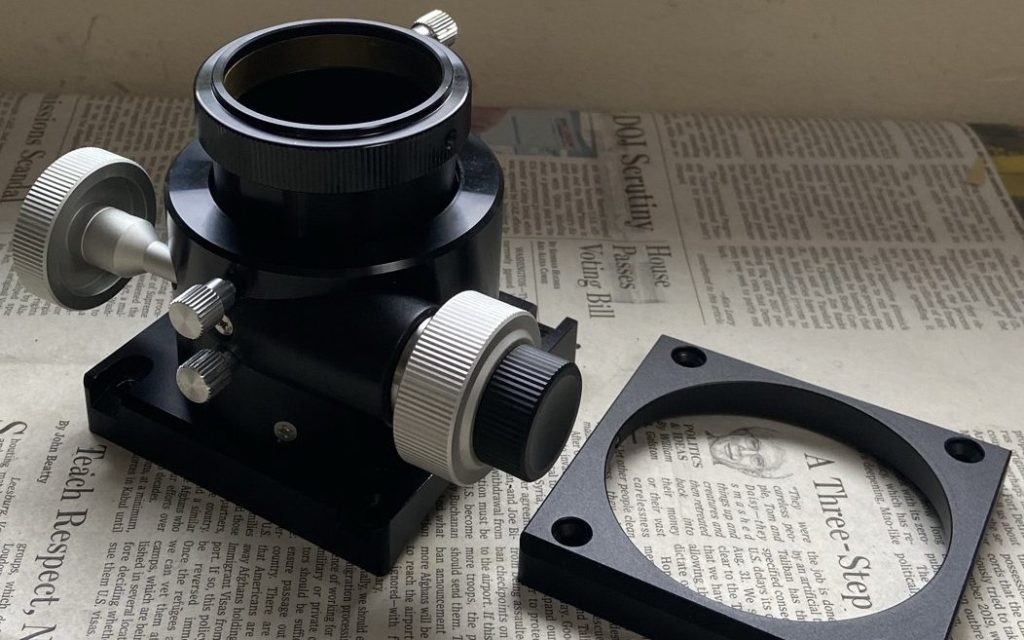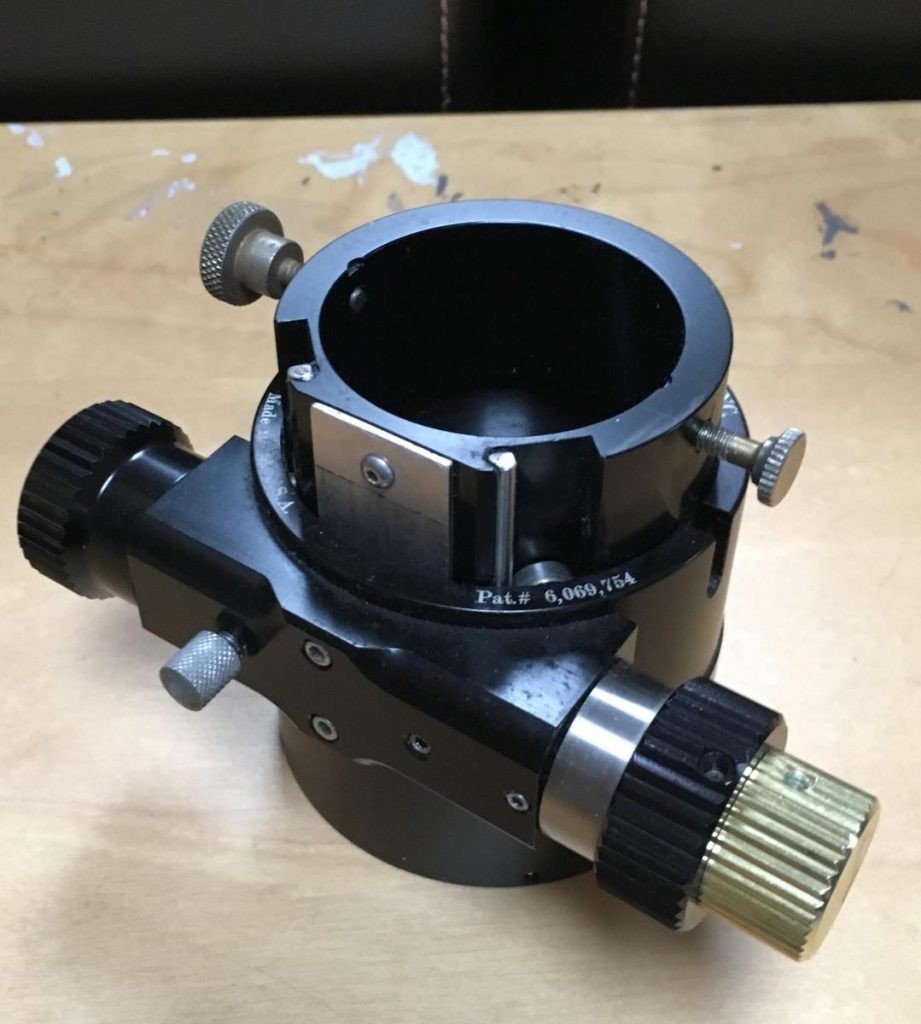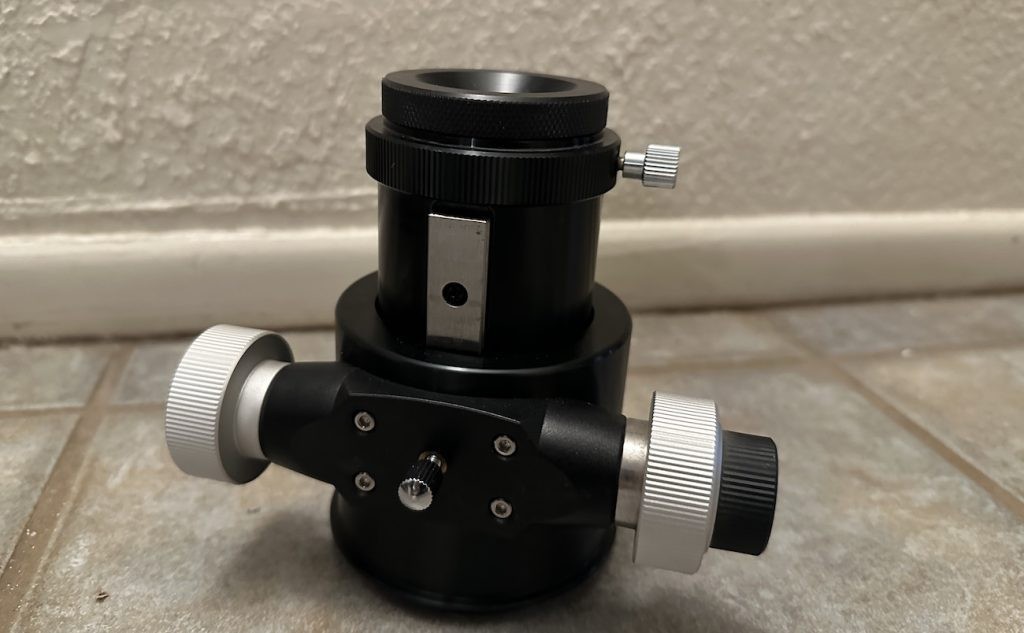For a basic understanding of the topic of telescope focusers, read our starting guide on telescope focusers, and then come back to this article where I talk individually about Crayford focusers, one of the most used type of telescope focusers.

Named after the Crayford Manor House Astronomical Society in England, where it was invented, the Crayford focuser outwardly resembles a rack-and-pinion design but doesn’t use gears to drive the draw tube along. Instead, it relies on a smooth, non-toothed friction system.
In a Crayford focuser, the drawtube is moved by the pressure of a roller bearing (replacing the pinion gear) gliding against a flat surface on the drawtube body (analogous to a rack). This surface is either a separate metal plate or simply machined into the body of the drawtube. When the focus knob is turned, the roller (connected to the knob via a rod or shaft) exerts pressure on the drawtube, causing it to slide in or out smoothly along the focuser body. The tension and pressure can be adjusted to accommodate different weights of eyepieces or cameras.

The main reasons I heavily use Crayford focusers are their high precision and smoothness of the focusing movement. This is due to the absence of gears and teeth, which eliminates backlash (the slight play or jerkiness often found in rack-and-pinion systems).
Much like the Dobsonian telescopes it is often attached to, I think of the Crayford focuser as an oddly simple but precise piece of engineering, relying only on the principles of friction to achieve smooth movement.
Pros
- Fairly economical
- More durable as they have fewer moving parts and no teeth to wear out over time.
- Since there are no gears, I usually don’t have to do frequent lubrication, making the focuser easier to maintain.
- It’s been easy to motorize
Cons
- I’ve noticed wear developing on the draw tube over a period of time.
- I’ve even accidentally pushed in a focuser that lacked a locking mechanism.
- Some models I’ve used were finicky to balance tension adjustments for smooth motion
- Extremely heavy loads sometimes cause focuser to sag or rack in/out on its own
GSO 2″ Crayford Is The Best-Value Focuser I’ve Used For My Reflector Telescopes

The dual-speed version of the GSO 2″ Crayford focuser is used on the Apertura AD Dobsonians and most other GSO reflectors/Cassegrains not otherwise equipped with the linear bearing version of this focuser.
Single-speed is a stripped-down version of the dual-speed GSO Crayford, with less precise focusing. I don’t see much of a reason to buy the single speed version new. However, if your telescope has a fairly slow f/ratio (say, >f/8), you can get away with the single-speed.
These are available for refractors too, with various flange options.
Essentially a scaled-down version of the 2” Crayford unit offered by GSO, I frequently use this focuser to swap in for the plastic 1.25” rack-and-pinion focusers found on many Newtonian reflectors.
JMI EV1 and EV3 Focusers Would Be My First Recommendations, Though
Linear Bearing Crayford Focusers
Linear bearings can handle heavier loads compared to standard Crayford focusers, which makes them ideal for use with heavy eyepieces, large cameras, and other accessories.
The main issue I’ve run into with linear bearing focusers, though, is that the ball bearings or rail can accumulate dirt or grime easily and then produce bumpy or stiff movement. It is quite time-consuming to dismantle and clean a linear bearing focuser to fix this issue, which is almost inevitable on some designs.
In a standard Crayford focuser, the drawtube’s movement is facilitated by a smooth, flat surface milled into the drawtube and a single cylindrical roller (coinciding with the focus knobs) to drive it along. The opposite side is supported by a set of smaller rollers.
In a linear bearing Crayford focuser, this system is upgraded by replacing the milled flat face of the drawtube with a machined metal rail and replacing the roller cylinders with a set of ball bearings, which are precisely aligned to ensure that the drawtube moves in a perfectly straight line.
Like other Crayford designs, linear bearing focusers often feature adjustable tension and a locking mechanism to securely hold heavy equipment, as well as dual speed options.
Starlight 2″ Feather Touch Is The Linear Crayford Focuser That I Use

Its ultra-precise fine focusing capabilities make it ideal for both observational astronomy and astrophotography. I use this for most of my top-quality Dobsonians and refractors.
For imaging purposes, a Feather Touch is an overkill.
Similar to the Feather Touch but weighing a bit more, the Baader Steeltrack is another excellent option I’ve resorted to earlier. This would also work for those demanding the highest precision and weight capacity out of a manual focuser.

I would not generally recommend this focuser over the regular GSO dual-speed Crayford and certainly not for non-imaging applications.
It’s essentially just an upgraded version of GSO’s regular dual-speed Crayford and comes stock on their R-C imaging telescopes. This focuser works well if properly lubricated and adjusted but tends to quickly develop slop and issues with dirt grinding inside the bearing mechanism.
